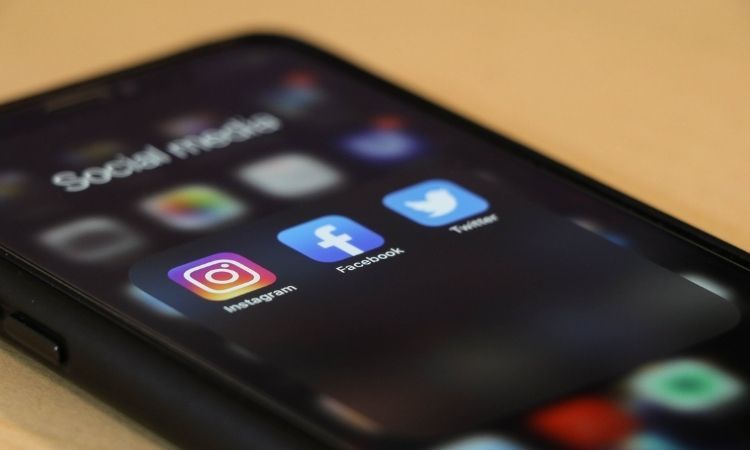Social media giveaways are great ways for companies to generate excitement about their brand. Unfortunately, they’re also excellent ways for scammers to exploit unsuspecting users.
Scams run rampant on social media, and fake giveaways are some of the most prominent examples. If you come across something that seems too good to be true, it probably is. Here’s why.
How a Giveaway Scam Works
Social media giveaway scams work by impersonating real-life brands or celebrities trying to connect with their audience. In many cases, they pretend to be accounts that have run legitimate giveaways in the past. For example, many scammers pose as the YouTuber MrBeast, who has a reputation for handing out piles of cash.
Giveaway scams often ask users to follow the page or share the post, as do many legitimate posts. Unlike real ones, though, some scams ask users to click a link to enroll in the giveaway. That link then takes them to a malicious site or installs malware onto their device.
In other cases, giveaway scams don’t include a malicious link but ask for information. They’ll request users’ names, birth dates, addresses, and even financial information under the guise of being able to contact them if they win. Spoiler alert—no one but the scammer will win anything.
Once scammers have users’ personal information, they use it to break into their financial accounts or other online profiles. Alternatively, they can sell this data on the dark web for other cybercriminals to profit from. In either case, it opens users up to a range of more dramatic attacks.
How to Tell if a Giveaway Is Legitimate
It’s better to be safe than sorry, so always ensure a giveaway is legitimate before entering it. Here’s how you can tell if it’s trustworthy.
Double-Check the Page
The first step in checking if a giveaway is legitimate is to verify it’s really from who it claims to be. This takes more than just a cursory glance. Social media sites can suggest irrelevant and even harmful content, so just because a post is promoted doesn’t mean it’s official or safe.
Many celebrities’ and businesses’ real accounts have a checkmark next to them to prove they’re verified. If you see a giveaway from a big company or celebrity that isn’t verified, it should raise suspicion. Nonetheless, you have to be careful on X (formerly Twitter), which lets accounts pay for that blue tick.
An easy way to tell if an account is real is to look up the business or celebrity on Google. From there, you’ll be able to find their real account. If that page doesn’t show the giveaway, you’ll know the prize is a scam.
Look at the Page’s Followers
A page’s follower count can also help you determine if something’s legitimate. Well-known people and companies tend to have a lot of followers. Consequently, if the page posting the giveaway has only a few hundred, it’s likely not the real deal.
If there are a lot of followers, take a closer look at the accounts that follow them. If there are no verified followers, or all of these accounts look strangely sparse or have no original content, the giveaway is likely fake. It suggests most or all of the page’s followers are bots scammers have used to appear more authentic.
Watch for Red Flags
There are a few other telltale signs of a scam you can look for, too. One of the biggest is any request for personal information or to follow an outside link. Even if a page is legitimate, there’s no good reason to ask for that, so avoid interacting with any giveaway that does.
A real prize draw won't ask for payment information or require you to pay anything. Many impersonation scams will send users direct messages telling them they’ve won, but very few real companies and celebrities reach out this way. Be suspicious of any DMs from these accounts, especially if you haven’t entered any contest.
Other red flags to watch for are urgent calls to action, spelling errors, and low-quality images. Attachments or downloads (neither of which you should interact with) in a post should also make you suspicious.
What to Do if You’ve Entered a Scam Giveaway
If you think you’ve fallen for a giveaway scam, don’t panic. You can still take action to protect your money and information. Here’s what you need to do.
Change Your Login Information
Stolen personal information can give scammers access to your online accounts, so change your login information immediately. Start by altering all your passwords. Remember: even without any details about you, hackers can crack some passwords instantly, so use long, complex codes unique to each site.
If you haven’t already, stop all communication with the scammer. Anything else you tell them can give them more sensitive data, so block and report them before revealing anything.
Contact Your Bank and Credit Companies
Next, you should secure your finances. If you’ve sent the scammer money already, you may not be able to get it back, but you can stop them from taking anything else. That starts with a call to your bank or credit card company to cancel your cards.
It’s also a good idea to freeze your credit while you’re at it. You can call Experian, TransUnion, and Equifax to freeze your credit for free, stopping anyone from opening any new lines of credit in your name.
Scan for Malware
There’s also a chance you might’ve accidentally installed malware when you fell for the scam. Consequently, it’s best to quickly scan your devices, even if you don’t think you clicked on anything.
Your computer’s built-in anti-malware software is a good start, but third-party software, even free options, is often more reliable. You can also get free iPhone antivirus software to scan for and remove malware from your phone.
Report the Scam
After you’ve secured your credit, accounts, and devices, you should report the scammer. Whatever social platform you saw the giveaway on should offer a step-by-step guide on reporting scams and accounts. You can also use the FTC’s online scam-reporting tool or go to IdentityTheft.gov to report scams or a stolen identity.
Scams Are Everywhere on Social Media
Giveaway scams are popular among cybercriminals because they’re easy to make and can be surprisingly effective. You can stay safe if you know how to spot them.
Scams are everywhere. As a rule of thumb, never give away any personal information online, and always verify everything before trusting it.



